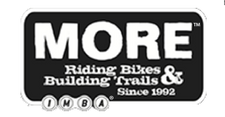Fountainhead: GIS Proposal Pilot Program
MORE recently voted to support Fountainhead (FH) liaisons’ request to fund use of a GIS (Geographic Information System) tool to improve planning for trail maintenance workdays. For one year, MORE will fund three licenses for ESRI’s Collector and server software for use by Fountainhead co-liaisons Paul Hardy and Tom Crotty.
As background, during an October 2015 workday, Tom and Paul discussed the challenges and need to more efficiently identify, track, and resolve the large number of maintenance requirements, and then assign and deploy work crews with the appropriate tools. Ruthann Ligon (GIS graduate student) overheard us and fast forward to October 2016, we now have a functioning GIS system. The liaisons regularly use the phone/server package to prepare for workdays while Ruthann has done the heavy technical lifting in the research, design, and maintenance of the GIS database as part of her graduate program.

Picture 1
For the next year, Fountainhead will operate under MORE’s non-profit status to obtain inexpensive software licenses from ESRI. After one year, the Board will review funding and whether to expand to other trails (liaisons, detailed map trail data is a requirement).
How does it work? ESRI’s Collector App on my iPhone is linked to FH trail map data (collected by Ruthann). For each trail maintenance task, using the Collector app, the liaisons are able complete a short form (downed tree, erosion, drainage, date), take a picture, and submit, all within a minute.
The real value is the post-ride analytic and planning components. Using the server desktop app, they are able review the recent pictures of maintenance issues, and sort them by date or type. As an example, you can display the quantity and type of tasks (tree cutting, erosion, drainage, etc.). This enables liaisons to create proper team assignments, determine team size, tools needed, and best route before the workday. By looking at the map, one can also decide the most efficient (“straight line”) walking route, and task sequence, to efficiently complete tasks. On the work day, the phone’s GPS is used to guide the crews to each specific task, vice meandering along the trail, which saves time. In sum, the GIS app enables liaisons to develop discreet work packages, assess team size, visualize tasks, and ensure the right tools are available and distributed. Also, planning saves time on the workday while enabling more work to be assigned and completed. Lastly, proper use of the GIS package enables liaisons to convey to volunteers that planning and preparation have been done and their time will be well utilized.

Picture 2
In addition to short-term planning for workdays, the server app is used to create permanent “layers”. For example, signs have been placed on each wooden bridge (B21 – Picture 1) and feature (ramps), and using the “Collector” app, taken a picture which is dumped into the GIS desktop. This creates a maintenance baseline for all wooden structures (purple bridges and yellow technical features) on the trail (Picture 2).
Each wooden structure has a bridge “Bxx” or feature “Fxx” sign (Picture 1) which when dumped into the GIS desktop app, becomes a “maintenance baseline layer of bridges and features. This help maintain and track maintenance and also serves as a defacto reference point.
Click on any symbol to bring up the corresponding photo (Picture 3). Below, notice the date the picture was taken, the issue (fallen tree), repair status, and a picture.

Picture 3
The GIS tool enables us to visualize the quantity, type, and location of tasks, and to develop a coherent plan to efficiently use volunteers and tools. Further, the phone’s GPS enables efficient in/out routing to a work site. This has greatly improved our understanding of what needs to be done and what has been completed (end of year reporting).
